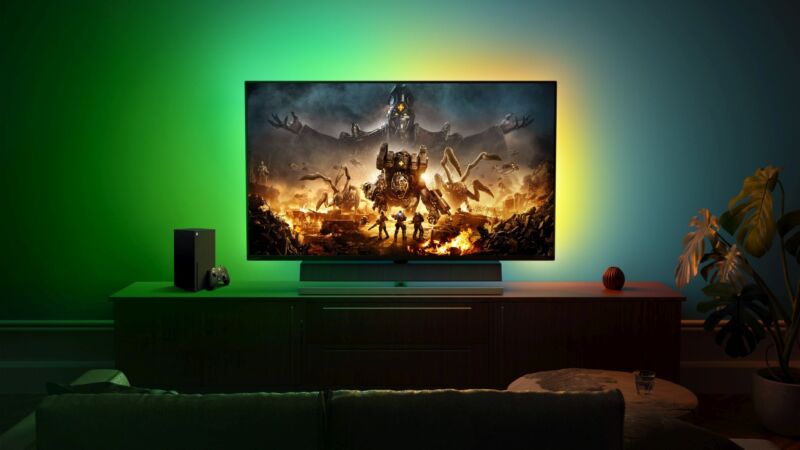Turns out that “HDMI 2.1” ports don’t need to actually support HDMI 2.1 features

Enlarge / Newer game consoles like the Xbox Series X and S support additional features on HDMI 2.1 displays, but HDMI 2.1 can mean different things depending on the product you're buying. (credit: Microsoft)
If you dabble in high-end 8K TV equipment or own one of the newest Xbox or PlayStation consoles, you might be familiar with HDMI 2.1. The latest version of the ubiquitous display spec adds variable refresh rate support, reduces latency, and offers a big bandwidth increase that allows for higher resolutions, higher refresh rates, and greater color depth. At least, it can support those things.
It turns out that TV and monitor makers don't actually need to support those marquee HDMI 2.1 features to claim HDMI 2.1 compliance. That's the gist of a report from TFTCentral, which points out that the HDMI 2.1 spec actually fully replaces the HDMI 2.0 spec rather than simply upgrading it. So any manufacturer that supports HDMI 2.0-level features is technically supporting "HDMI 2.1" because the HDMI 2.0 spec doesn't exist anymore. And the features we think of when we talk about HDMI 2.1-including Fixed Rate Link (FRL) signaling, variable refresh rate (VRR) support, Auto Low Latency Mode (ALLM), and the enhanced Audio Return Channel (eARC)-are technically optional.
"Products can no longer get certified for 2.0 only for 2.1, and also 2.1 features are optional to implement, so popular features like 4k120, ALLM, VRR are not required," Brad Bramy, VP of marketing and operations for the HDMI LA, confirmed to Ars. "Manufacturers could only implement eARC, for example, and claim to be a 2.1-enabled device."
Read 6 remaining paragraphs | Comments